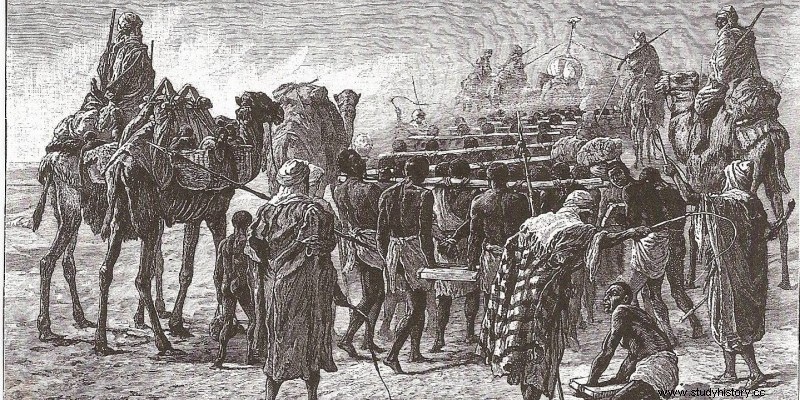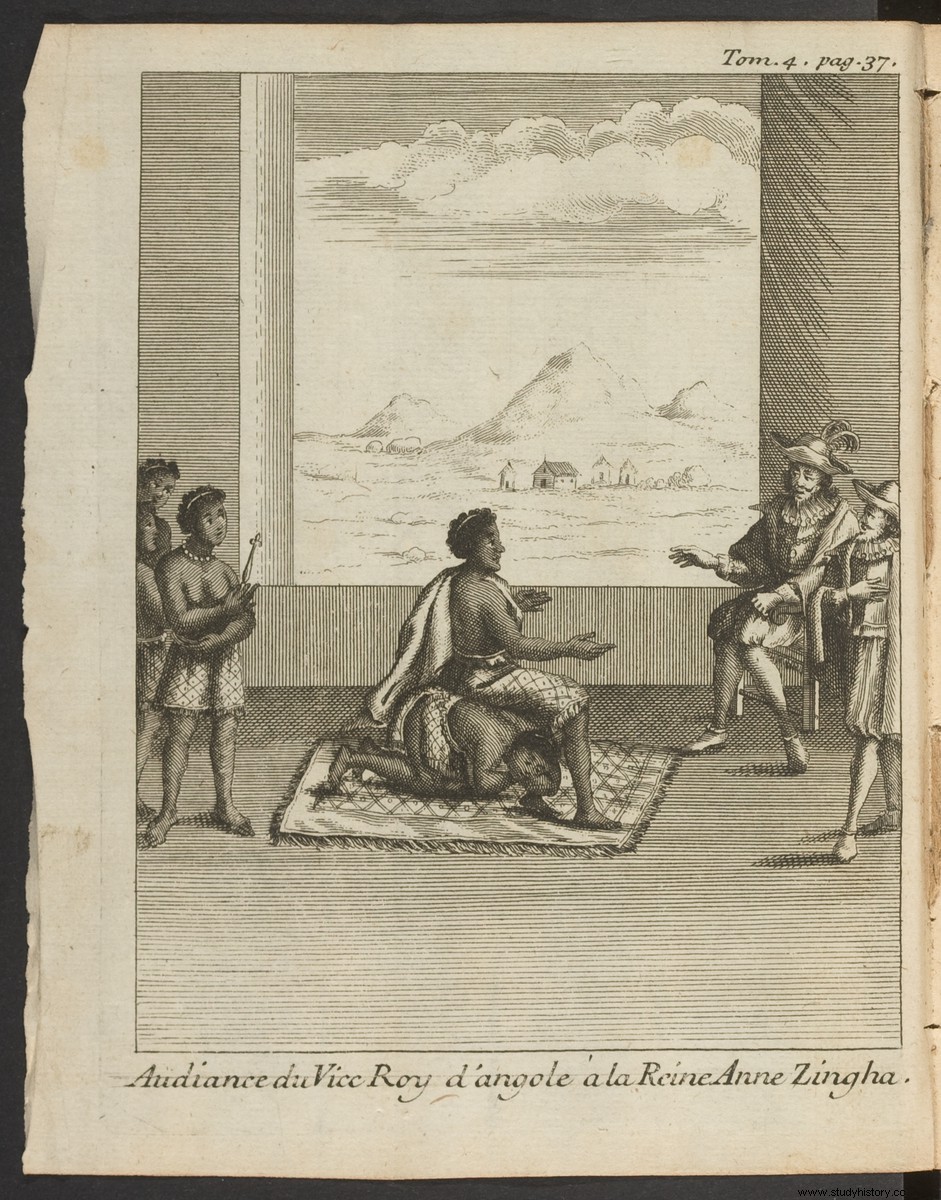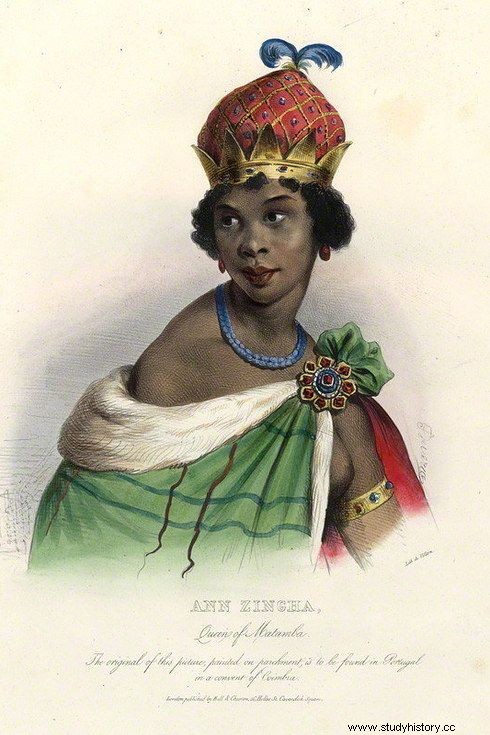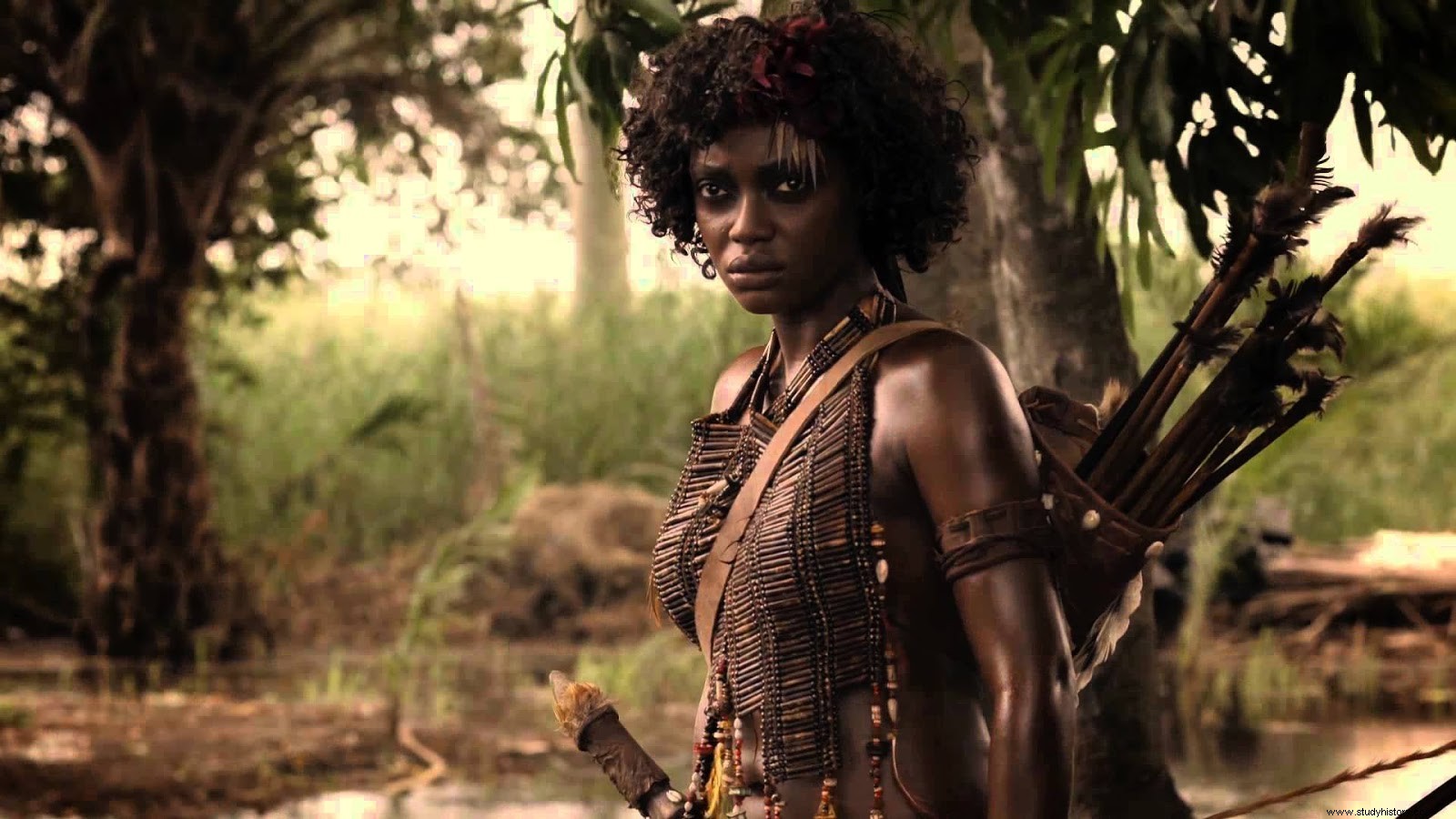Since the 8th century, the Muslims, who controlled North Africa, bled the African continent of its human resources in every possible way. The spread of Islam into so-called "Black Africa" entailed the capture of millions of slaves who were shipped north via routes across the Sahara, and to the Arabian Peninsula via Red Sea and Indian Ocean ports. With the arrival of the Portuguese on the African continent in the fifteenth century, they would be the ones who would take control of the slave trade on the west coast. Until the end of the 15th century, the slave trade was almost exclusively in the hands of the Arabs and the Portuguese:the Arabs supplied the Eastern world and the Portuguese supplied the Western powers. The discovery of the American continent and the subsequent "need" for labor to work in the plantations and mines, opened a new way to dispose of the slaves captured in Africa. And although the Spanish colonies in the American continent would be the first to use African slaves, since the 16th century the so-called Atlantic slave trade was controlled almost exclusively by the Portuguese. The Spanish monarchy preferred not to "dirty their hands" and used the black seats , commercial agreements of the Crown with other monarchies, or with individuals, to provide the American possessions with slaves in exchange for receiving a percentage of the profits from the sale.

The arrival of new actors from the north, such as the English or French, and the growing demand for manpower, led Portugal to establish a colony south of the Congo River, in the territories of present-day Angola. Curiously, the name of Angola has to do with “ngola ”, the title held by the African kings of these territories. Once they controlled the coast, where they founded Luanda in 1575, they had two options to obtain slaves -because it was a colony based on the slave trade-:the first, and most dangerous, was to enter the territory of the Ndongo kingdom, inhabited by the mbundu , of Bantu origin, and capture everyone who crossed his path; and the second, more expensive but with less risk, signing alliances with neighboring peoples who are enemies of the mbundu , like the mbangala And let them do the dirty work. And, in the middle of this pincer, the mbundu people with the Angolan Kiluanji Kia Samba to the front fighting the Portuguese and/or the Mbangala. A king who, strangely, always treated his son the same as his three daughters. Of course, his right eye was his daughter Nzinga Mbande . In 1618, after Killuanji's death, his son Mbandi succeeded him on the throne. . The latter, trying to secure the throne for his offspring, ordered the assassination of Nzinga's son and the sterilization of his sisters - imagine this type of intervention in the 17th century - but Nzinga, after seeing his son die, managed to escape.
Years later, Mbandi reached out to Nzinga and she returned home. Faced with the impossibility of confronting the Portuguese power, the Ngola Mbandi sent an embassy to Luanda headed by his sister. We are in 1622. As an act of good faith - she would do anything to achieve peace for her family - Nzinga converted to Catholicism and was baptized with the name of Anna de Sousa , in honor of the wife of Governor Joao Correia de Sousa. She managed to sign a peace agreement and a certain independence in exchange for allowing the Portuguese to establish a settlement in the interior and the regular delivery of a certain number of slaves. Logically, Nzinga had no intention of fulfilling the delivery of slaves, but she served him to gain time and put her plan into action. There is an anecdote in this meeting with the Portuguese that makes the character of this woman clear. The governor received her seated in an armchair and pointed out a carpet on the floor for her to sit on -establishing that she was a vassal and that she should sit on a lower level-. Undeterred, Nzinga ordered one of her maids to get down on all fours and proceeded to sit on her back so as to be at the same height as her and make it clear that they were with an “equal”. .

With the peace agreement under her arm, she returned…and set her own revenge in motion. Her brother and her nephew died, shall we say, under mysterious circumstances and she claimed power. As she knew that for many it was an aberration to be governed by a woman, she allied herself with the mbangala dissatisfied with the support of the Portuguese and she managed to be named ngola Nzinga . Her first decision in her position was to offer asylum to all escaped slaves and, in addition, she encouraged captured Africans to escape the Portuguese yoke and join the ranks of her army. Since the opponents argued that a woman could not occupy the throne, she dressed in her father's ceremonial clothes and set up her own harem of concubines -men dressed as women-. And she tells herself that she never repeated, because the one she chose to spend the night... she no longer saw the sun.

Logically, Portugal was not going to allow the breach of the pact and, above all, that it incite the slaves to flee and join the Nzinga army to fight against them. In 1626 she was defeated and had to flee north, where she, along with an important part of her army, established a new kingdom in Matamba . Hostilities between Nzinga and the Portuguese, always with the Africans getting the worst of it, lasted until 1641, when the Dutch took Luanda. This Dutch occupation was collateral damage from the so-called Brazilian invasions, the planned occupation of northeastern Brazil by the Dutch West India Company. Quickly, Nzinga sent an embassy to Luanda and signed an alliance making a common front against the Portuguese. With Dutch support, she managed to recover part of the territories of the kingdom of Ndongo, putting the Portuguese and their slave colony on the ropes... but without being able to drive them out.

When in 1648 Portugal managed to recover Luanda, Nzinga and his family had to return to take refuge in Matamba. Although his forces were already greatly depleted, he continued to fight until in 1654, over 70 years old and no longer able to lead his troops into battle, he signed a peace treaty with his arch-enemies. Despite having to, both her and her subjects, abandon some of her customs and convert to Christianity - total, for her it was already the second time -, she considered that it was not a very high price that she had to pay. . After more than four decades fighting against European occupation and the enslavement of his people, he put his weapons aside and devoted all his energies to strengthening the position of his people, rebuilding a devastated nation and turning it into a commercial power.
Her death in 1663 at the age of 82 accelerated the Portuguese occupation of the interior of Southwest Africa. Without her fiercest opposition, in 1671 the entire kingdom of Ndongo and the Matamba possessions became part of Portuguese Angola.
Warrior, strategist, diplomat, free and, therefore, a benchmark for the independence of Angola.
When I turned,
the arms of two men
the courage of the soldier
the sighs of two poets
everyone, all of us tried to stand tall
above the lembranças of two heroes
Ngola Nzinga
everyone tries to stand up high
to the flag of independence.
Fragment of the poem “O içar da bandeira ”, written by Agostinho Neto, leader of the Popular Liberation Movement and first president of Angola.
